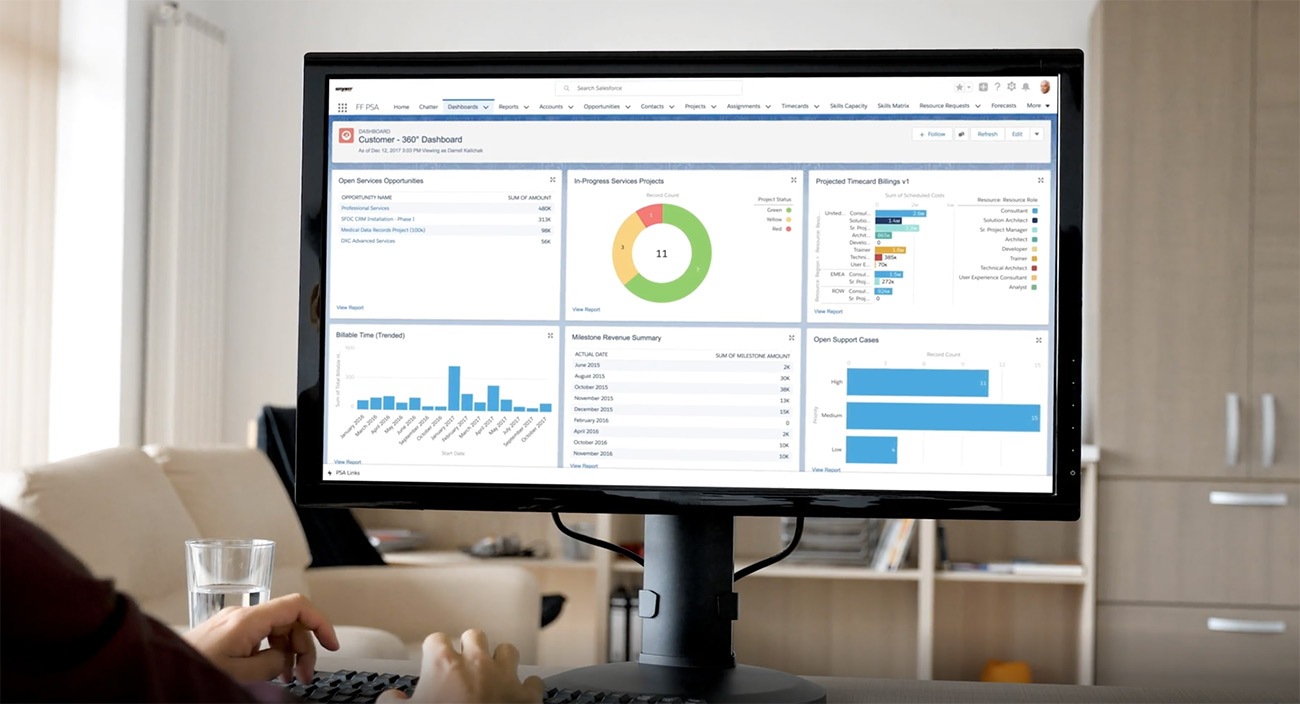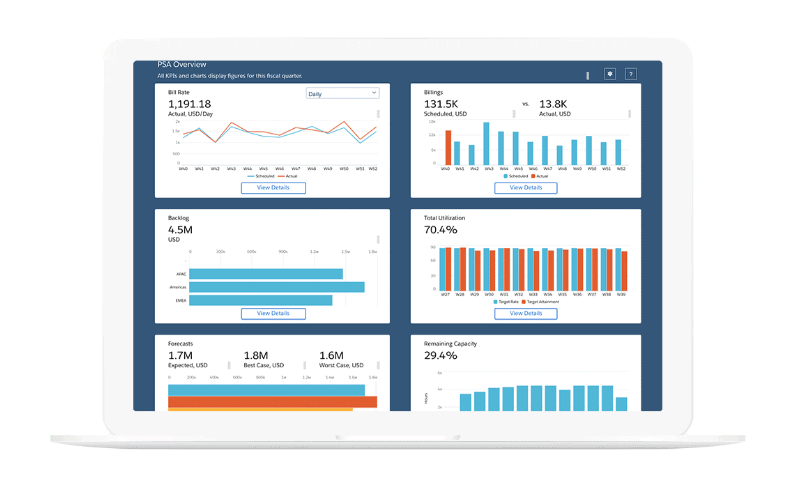Service delivery lessons from 2020: Thriving in good times and bad
Guest post by John Ragsdale, the distinguished vice president of technology research for the Technology Services & Industry Association (TSIA). John’s expertise is in assisting enterprise technology firms with the selection and value realization of tools and platforms, with a constant focus on the customer experience.
Nearly every business and industry felt the impact of the COVID-19 pandemic. We’ve seen a lot of scenarios: limited (or entirely halted) operations, weakened cash flow, and projects put on hold. In one of the first surveys that TSIA conducted with our members about the impact of the pandemic last Spring, 89% of companies said they expected Professional Services (PS) revenues to be negatively impacted. Fortunately, the results were not so dire, and by late summer 50% of companies saw revenue growth for remotely delivered PS projects compared to 2019. How? Many innovative companies were able to leverage the transformation to remote and virtual capabilities to expand their business with offers they would have never considered before.
The cloud delivery factor
Despite this environment of uncertainty, the professional services industry as a whole did surprisingly well on the growth trajectory. Many PSOs leveraged their current cloud and digital technologies to pivot and deliver remotely with ease. A total of 75% of TSIA members reported that their existing PS offers could be easily transitioned to remote delivery, and 97% said after COVID-19 they intended to keep delivering some services remotely that were previously delivered onsite.
Other companies utilized unused travel and event budgets to invest in creating or extending cloud, digital, and virtual infrastructure, with the TSIA 2020 Professional Services Tech Stack Survey showing much higher planned spending for 2020-2021 than in previous years. Unfortunately, not everyone took this opportunity to transform, and this static path led some firms to experience significant business impacts and employee downsizing.
While many struggled, others thrived and there were many lessons about flexibility and adaptability we all learned, that should be applied moving forward. After brainstorming with the team at Certinia, we’ve highlighted a few of the winning strategies here.
1. Build processes focused around the customer
Though companies have been giving lip service to being “organized around the customer” for years, I think the sentiment has become reality for more tech companies, particularly as subscription revenue and renewals are totally dependent on delivering both business value and a differentiating experience. As the number of delivery models multiplies, compounded by the COVID-19 global pandemic, customer-centricity has never been more important or so closely examined. Taking actions to enable customer success and build dynamic customer relationships is now imperative.

Here are a few strategies to help you in this effort:
- Ensure your systems allow you to quickly adjust to meet ever-changing customer needs.
Investments in technologies such as configure price quote (CPQ) and service catalogs, and tight integrations between these systems and professional services automation (PSA) and customer relationship management (CRM), allow sales and service teams to easily create flexible offers as customer requirements, timelines, and budgets are in flux. - Establish fluid processes centered around the customer journey.
Both processes and knowledge transfer must flow seamlessly from opportunity through to project delivery, revenue recognition, onboarding, and go-live. With a much bigger focus on delivering value to customers faster to facilitate subscription renewals and expand selling, it is critical that everyone involved in the customer journey has visibility to the customer’s expected outcomes, and services projects must be focused on achieving and accelerating those outcomes. Just over a third of TSIA members, 35%, have a methodology for developing PS offerings that are intended to accelerate adoption of products by customers, though this mindset is increasing. If you still have some consultants with the “launch and leave” mentality common in the old on-premise world, it is time for some retraining and new MBOs to focus them on customer success. - Create a single source of truth for customer information.
Ideally, your CRM account and contact records serve as the master customer record, and every touchpoint with the customer across their entire journey is collected there. This allows any employee to go to a single location to know what is going on with your customers at all times. This requires strong integration between CRM and PSA, as indicated above, but it also means systems should be proactively notifying delivery managers of delays or cost overruns, and not expecting overburdened managers to be passively monitoring dashboards to identify problems. - Deliver a modern customer experience supported with innovation, trust, and transparency.
This may require an overhaul to technology to better enable virtual customer experiences, and we are even hearing of more companies providing empathy training for consultants to help them work more effectively with customers under enormous business and personal pressure.
2. Enforce collaboration (partners, customers, team) via workspaces and communities
Delivering services virtually is now the norm. Professional services businesses have had to change not only how they run and deliver projects, but also how they interact with customers and partners. Effective partner, customer, and consultant collaboration has become more important than ever.
Increasingly, professional services organizations have turned to collaborative workspaces that enable them to virtually share project information with customers, one example being Certinia PSA Communities, which provide internal and external stakeholders with secure, central access to the most relevant information, reports, project plans, documentation, etc. This central collaboration hub should be where all project-related work is tracked, with progress updates and any project metrics easily accessible. Ideally, a customer self-service component is available 24×7, so customers have project dashboards they can access to know the current status, next steps, and upcoming milestones. This type of visibility and proactive communication will play an increasingly important role in improving the overall customer experience, project delivery, and guaranteeing the desired business outcomes.
Collaborative communities also increase visibility when working with implementation partners, as it brings everyone involved into the same system to share content and ideas, and track project progress and margins. On average, enterprise technology firms deliver 20% of PS engagement through subcontractors/partners, and leveraging 3rd parties can help PS organizations scale and avoid project backlogs. However, subcontractor project margins tend to be much lower, averaging 30% compared to 52% for projects delivered by internal resources. Encouraging partners to use communities gives much better insight into project execution, and your project management office can step in to assist if needed to keep projects on track.
Also, you don’t have to wait until the end of the project to survey customers about their satisfaction with the project team and their progress, whether delivered by internal or external resources, or a combination of the two. Virtual delivery can sometimes make it more difficult to pick up on queues relating to customer sentiment. Consider a short survey at each project milestone to gauge customer perception, and be sure to touch every stakeholder in the project—not just the project lead.
3. Invest in real-time data analytics to maximize predictability
According to TSIA’s 2020 PS Tech Stack Survey, although PSA adoption is now very high, currently used by 75% of companies, planned spending for PSA remains strong, with 57% of companies saying they had budget for new or additional PSA capabilities in 2020-2021. Based on member conversations, a good portion of this spending is earmarked to introduce more intelligence into PS revenue and resource forecasting.

For companies to have a predictable PS business, it is critical to eliminate guesswork and take advantage of real-time analytics to understand the current and future state of the business. Not only do you need a detailed understanding of existing capacity, but understanding the pipeline and future resource needs is just as important, and few companies are adequately analyzing these future needs today. As PS offers are transforming along with technology and evolving buying habits, the number of consultants, their experience, certifications, and the industry expertise you will need six, 12, or 18 months from now may be dramatically different.
Sophisticated analytics, powered by solutions such as Salesforce Einstein, can tap into scenario-based formulas and delivery curves specific to your organization, to accurately predict utilization, backlog, and capacity for your business over the next 12-18 months. The ideal PSA solution won’t just offer these insights at the broader departmental and business levels, but at various resource levels as well, such as practice, geography, industry, or role.
As we have all experienced over the last year, PS teams must be able to pivot as business conditions change, and real-time analytics will provide accurate forecasts for multiple scenarios. This ability to quickly and effectively alter execution depending on market factors allows companies to create a more predictable business, and reduce risks for both themselves and their customers.
A year to reflect on
As challenging as the last year has been, both personally and professionally, I think that each of us, and our businesses, have emerged stronger and more resilient than ever before. I encourage everyone to embrace what we have learned, continue to invest in the infrastructure needed to thrive on change and transformation, and maintain this renewed focus on measuring and improving the customer experience, and ensuring customer success.





